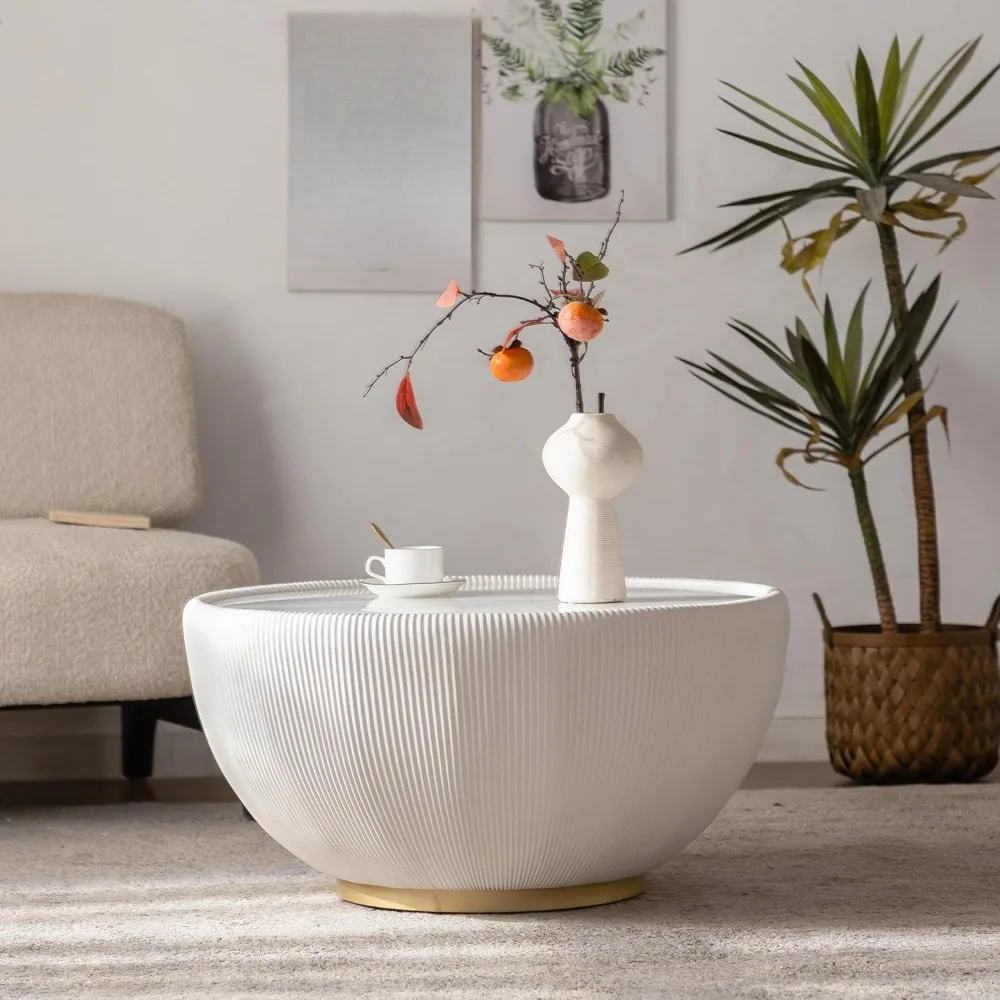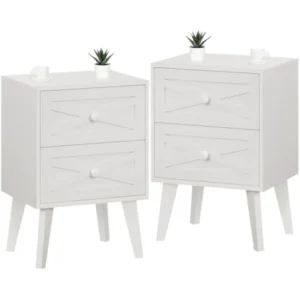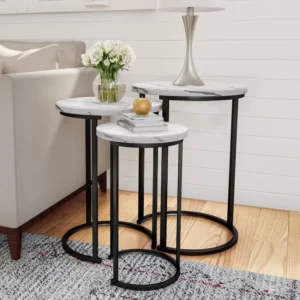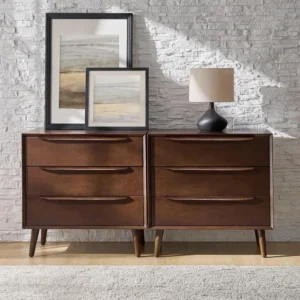Understanding Mid-Century Modern Design Philosophy
Mid-Century Modern design emerged as a revolutionary aesthetic movement that flourished approximately from the 1940s through the 1960s. This distinctive style developed in response to the societal shifts following World War II, when optimism, prosperity, and technological advancement created the perfect environment for design innovation.
The core principles that define Mid-Century Modern furniture include:
- Functionality as the primary consideration, with form following purpose
- Clean, uncluttered lines that create visual clarity
- Organic forms that reference natural shapes
- Honest expression of materials, celebrating their inherent qualities
- Minimal ornamentation, letting structural elements provide visual interest
Round tables particularly exemplify these principles, as their circular form embodies the organic, fluid shapes that Mid-Century designers favored while maintaining the clean simplicity central to the movement.
The movement drew inspiration from various sources, including the minimalist approach of the Bauhaus school, the warmth and craftsmanship of Scandinavian design, and the optimistic innovation of American post-war culture. These influences converged to create furniture that was both beautiful and practical—a philosophy clearly embodied in the intelligent black mid-century coffee tables that remain popular today.
Understanding the fundamental principles of mid-century modern table design provides essential context for appreciating the specific aesthetic features that make these pieces so enduringly appealing.
Signature Elements that Define Round Mid-Century Tables
Round Mid-Century tables display a distinctive aesthetic vocabulary that sets them apart from both earlier ornate styles and later design movements. Their defining visual characteristics create an immediately recognizable presence in any space.
Clean, Uninterrupted Lines
Mid-Century round tables reject unnecessary decoration in favor of clean, continuous lines that create visual harmony. Unlike earlier furniture styles with elaborate carvings or ornamentation, these tables let their essential form speak for itself.
Geometric Precision Meets Organic Fluidity
What makes round Mid-Century tables truly special is their perfect balance between geometric precision and organic shapes. The perfect circle of the tabletop provides mathematical precision, while softer edges and curved supports add natural fluidity.
Minimal Ornamentation
True to Mid-Century principles, these tables avoid superfluous decoration. When ornamentation appears, it’s integrated into the structural elements rather than applied as an afterthought. This restraint creates a sense of purpose and intentionality in the design.
Circular Form’s Significance
The round form holds special significance in Mid-Century design philosophy. Circles represent completion, harmony, and unity—concepts that resonated deeply during this period of optimism and social transformation. The continuous curve of a round table creates a sense of flow that rectangular tables cannot achieve.
Proportional Harmony
Mid-Century designers paid meticulous attention to proportions. The relationship between tabletop diameter, height, and base dimensions was carefully calculated to create visual balance. This mathematical precision contributes significantly to the enduring appeal of black mid-century coffee table design.
The Artistry of Table Legs and Bases
The supporting structure of round Mid-Century tables is far more than functional—it’s often the most distinctive and artistically significant element of the design. The bases and legs of these tables showcase the ingenuity and artistic vision that defined the era.
Tapered Legs
Perhaps the most iconic leg style in Mid-Century design, tapered legs start wider at the top and gradually narrow toward the floor. This subtle angle creates a sense of lightness and elegance while maintaining structural stability. Often set at a slight outward angle, these legs convey a sense of dynamic energy despite their simplicity.
Pedestal Bases
Designer Eero Saarinen famously sought to eliminate what he called the “slum of legs” with his pedestal-based Tulip Table. This innovative approach features a single central support that flares outward at the bottom for stability. Pedestal bases create an uncluttered understructure that maximizes legroom while providing a sculptural focal point.
Splayed Legs
Many round Mid-Century tables feature legs that angle outward from a central point. This “splayed” arrangement provides greater stability while creating a distinctive silhouette. The precise angle of the splay was carefully calculated to achieve both structural integrity and visual appeal.
Sculptural Bases
Some of the most striking mid-century modern round coffee tables feature bases that function as sculptures in their own right. These might include organic forms reminiscent of natural shapes or abstract geometric compositions that create visual drama beneath the simplicity of the round top.
Material Combinations
Mid-Century table bases often showcase thoughtful combinations of materials—wood paired with metal accents, for example—creating visual contrast while highlighting the properties of each material. These combinations demonstrate the era’s innovative approach to using traditional and new materials together.
Material Expression: The Essence of Mid-Century Tables
The materials chosen for Mid-Century tables weren’t merely structural necessities—they were essential expressive elements that communicated the design’s aesthetic values. Designers selected materials not only for their physical properties but also for their visual and tactile qualities.
Wood Selections and Their Visual Properties
Teak: Prized for its rich warm tones and natural oils that provide durability and water resistance. Teak develops a beautiful patina over time, enhancing its character.
Walnut: Perhaps the quintessential Mid-Century wood, walnut’s deep color variations and elegant grain patterns create natural visual interest without added ornamentation.
Oak: Offering exceptional strength and distinctive grain texture, oak was often used in more casual Mid-Century pieces or combined with other materials.
Rosewood: With its luxurious appearance and complex grain patterns, rosewood was reserved for higher-end pieces where its natural beauty could take center stage.
Innovative Materials that Defined the Era
Glass: Clear, frosted, or smoked glass tabletops create visual lightness while allowing the base design to remain visible. Glass elements helped furniture feel less imposing in smaller post-war homes.
Metals: Chrome, brass, aluminum, and steel appear as accents or structural elements, often in leg ferrules, edge banding, or as complete bases. Their reflective qualities contrast beautifully with warm woods.
Laminates and Plastics: Revolutionary for their time, these materials introduced bold colors, patterns, and practical surfaces that could withstand family life.
Natural Beauty Enhancement
Mid-Century finishing techniques typically enhanced rather than masked the natural characteristics of materials. Oil finishes that brought out wood grain, matte surfaces that highlighted texture, and transparent stains that maintained the visual integrity of the material were preferred over opaque coatings.
Mid-century modern walnut coffee tables showcase this philosophy perfectly, with finishes that highlight the wood’s natural beauty rather than concealing it.
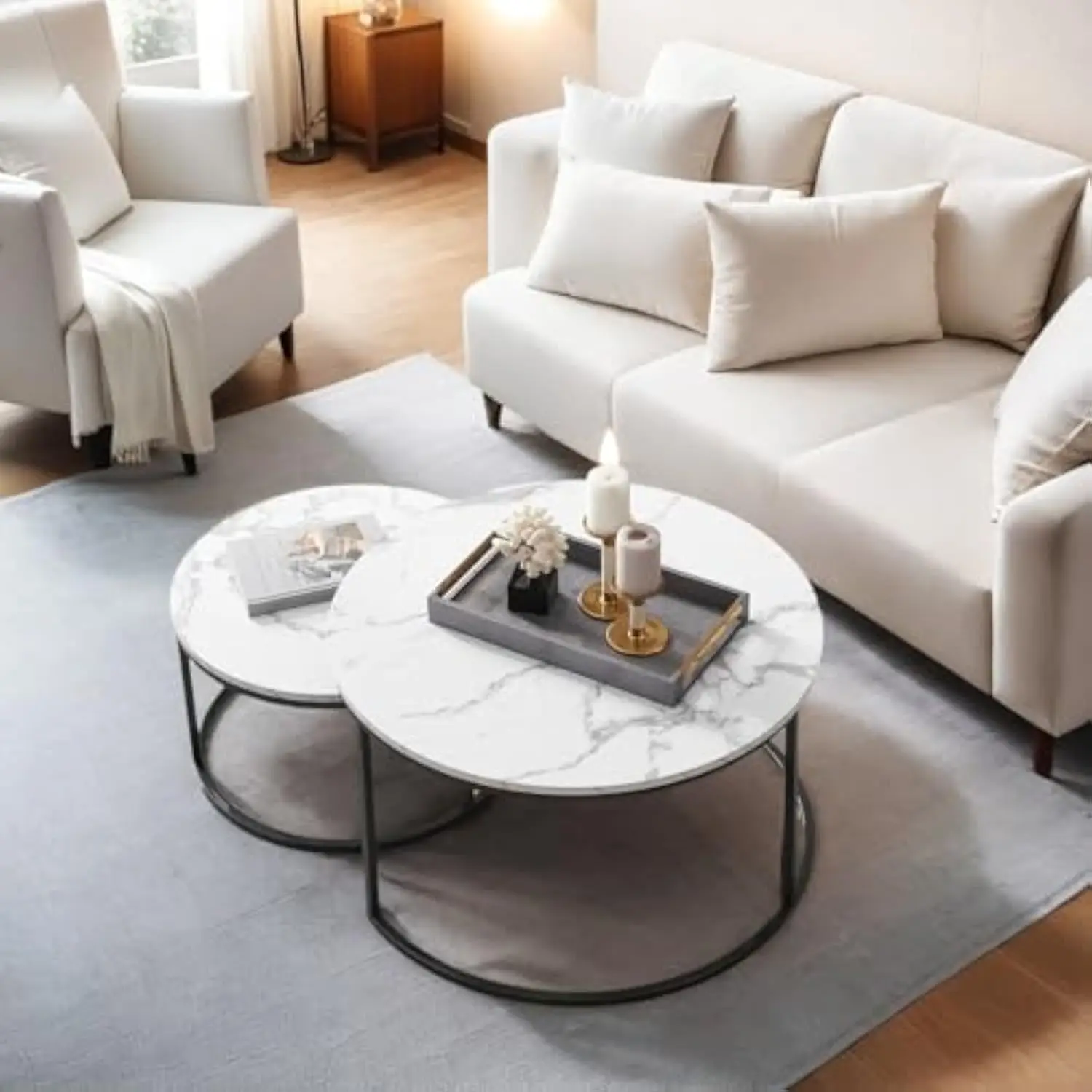
Surface Treatments and Edge Details
The top surface of a Mid-Century round table may appear simple at first glance, but closer examination reveals thoughtful decisions about thickness, edge treatments, and finishes that contribute significantly to the overall aesthetic impact.
The thickness of tabletops was carefully considered in relation to the table’s overall scale. Too thin, and the top would appear insubstantial; too thick, and it would seem heavy and dominating. Mid-Century designers often achieved visual lightness by tapering the edge to appear thinner than the structural thickness.
Edge treatments on solid wood coffee tables show particular attention to detail:
- Beveled edges that catch the light and create subtle shadow lines
- Rounded edges that soften the transition between horizontal and vertical planes
- Bullnose profiles that create a more substantial visual weight
- Knife edges that maximize the impression of thinness and precision
Surface finishes contribute significantly to both appearance and tactile experience. Mid-Century designers typically preferred satin or matte finishes that showcase the material quality without distracting shine. These finishes create a subtle luster that changes with lighting conditions, bringing the surface to life throughout the day.
When inlays or patterns appear on Mid-Century tables, they’re typically geometric and integrated into the overall design rather than appearing as decorative afterthoughts. These elements create visual interest while maintaining the clean, intentional aesthetic that defines the style.
Color Philosophy in Mid-Century Table Design
Color plays a sophisticated role in Mid-Century table design, even when it appears to be absent. The approach to color was deliberate and philosophical rather than merely decorative.
Natural wood tones form the foundation of the Mid-Century color palette. The inherent colors of teak, walnut, oak, and rosewood—ranging from honey gold to deep chocolate—were celebrated and enhanced through finishing techniques. These natural tones provided warmth and connection to nature that balanced the modern forms.
When more vibrant colors appear in Mid-Century tables, they’re typically used with strategic restraint. A colored surface might be paired with natural wood legs, or a vibrant accent might highlight a particular structural element. This selective application creates focal points without overwhelming the design’s elegant simplicity.
The broader Mid-Century palette often incorporated colors we now consider retro: burnt orange, avocado green, mustard yellow, and turquoise. These colors might appear in laminate tabletops or as accents that coordinate with other interior elements. The design benefits of round mid-century tables include their ability to incorporate color while maintaining visual balance.
Material and color choices were inseparable decisions in Mid-Century design. The natural tones of wood, the reflective qualities of metal, and the possibility of color in newer materials like laminate all influenced how designers approached color composition in their table designs.
The Harmony of Form and Function
One of the most admirable qualities of Mid-Century design is how aesthetic choices enhance functionality rather than compromising it. Round Mid-Century tables exemplify this principle perfectly, with their form directly supporting their practical purpose.
The circular shape creates inherent ergonomic advantages in social settings. With no corners to navigate and no “head of the table,” round tables facilitate more democratic and fluid interactions. Everyone seated has equal status and can engage easily with all others—a physical manifestation of the more egalitarian social values emerging in the Mid-Century era.
Space efficiency is another practical benefit of the round form. In the smaller homes of post-war America, round tables could be placed in corners or central positions with equal effectiveness, while their absence of sharp corners made them safer and easier to navigate around. This made functional uses of round mid-century tables particularly valuable in various settings.
Mid-Century designers often incorporated ingenious functional innovations that appeared seamless with the overall aesthetic. Expandable mechanisms, height-adjustable features, and convertible elements were designed to work in harmony with the visual composition rather than appearing as technical afterthoughts.
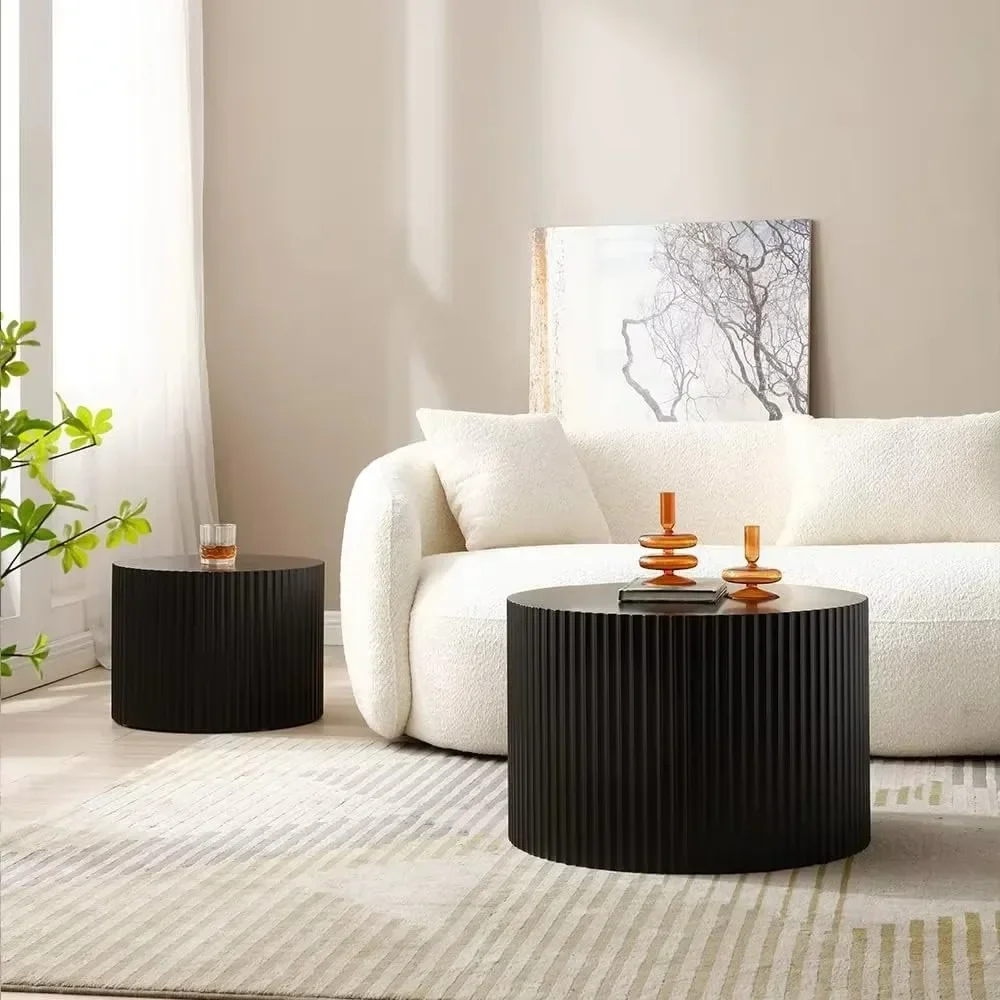
Nesting tables represent a perfect example of Mid-Century functional innovation. These space-saving sets featured graduated sizes that could be stored compactly or expanded for use as needed, all while maintaining consistent design language across each piece.
Mid-Century Modern End Table Sets of 2, Mid-Century Modern Square Side & End Tables, Mid-Century Modern White Side & End Tables
$348.24 Select options This product has multiple variants. The options may be chosen on the product pageMid-Century Modern Solid Wood Coffee Tables, Mid-Century Modern Teak Coffee Tables
$879.95 Select options This product has multiple variants. The options may be chosen on the product pageMid-Century Modern Danish Coffee Tables, Mid-Century Modern Oval Coffee Tables, Mid-Century Modern Solid Wood Coffee Tables
$390.05 Select options This product has multiple variants. The options may be chosen on the product pageMid-Century Modern Nesting Side & End Tables, Mid-Century Modern Nesting Table Sets, Mid-Century Modern Round Side & End Tables
Price range: $239.35 through $273.06 Select options This product has multiple variants. The options may be chosen on the product pageMid-Century Modern End Table Sets of 2, Mid-Century Modern Walnut Side & End Tables
Price range: $978.89 through $1,957.38 Select options This product has multiple variants. The options may be chosen on the product pageMid-Century Modern Coffee & End Table Sets, Mid-Century Modern Coffee Table Sets, Mid-Century Modern Oval Coffee Tables
Price range: $257.48 through $331.04 Select options This product has multiple variants. The options may be chosen on the product page
Scale and Proportion: Creating Visual Balance
The enduring appeal of round Mid-Century tables owes much to their mathematical precision. Designers of this era, influenced by modernist principles, often applied mathematical concepts like the golden ratio to their furniture proportions.
Height-to-width relationships were carefully calculated to create visual harmony. Coffee tables typically maintained a height-to-diameter ratio that kept them in proper proportion to surrounding seating, while dining tables balanced diameter against height for comfortable dining without wasted space.
Different functional contexts required different proportional considerations. Dining tables needed sufficient surface area per person while maintaining conversational proximity. Coffee tables required a height comfortable in relation to seating while providing adequate surface area. Side tables needed to complement rather than compete with other furniture pieces.
The relationship between negative and positive space was another consideration. The open area beneath a table was treated as an integral part of the design, not merely empty space. This is particularly evident in mid-century modern nesting coffee tables where the relationship between components creates a dynamic spatial composition.
Visual weight distribution between top and base required careful balance. A substantial top might be paired with a visually lighter base to create stability without heaviness, while a more dramatic base might support a thinner top to maintain equilibrium in the overall composition.
Distinctive Details: What Sets Quality Mid-Century Tables Apart
The difference between exceptional and ordinary Mid-Century tables often lies in the subtle details that reveal craftsmanship and design integrity. These distinguishing elements may not be immediately obvious but contribute significantly to both aesthetic quality and longevity.
Joinery Techniques
Quality Mid-Century tables feature joinery methods that enhance both structural integrity and visual appeal:
- Finger joints that create strong connections while adding rhythmic visual detail
- Dovetail construction that showcases craftsmanship while providing durability
- Mortise and tenon joints that ensure structural stability without visible hardware
Hardware Integration
How hardware elements are incorporated reflects design thoughtfulness. Some designs proudly feature hardware as visual elements, while others conceal mechanisms entirely. When visible, hardware is typically minimal and purposeful, often in brass or chrome that develops character with age.
Edge Detailing
The treatment of edges reveals much about quality. Superior tables feature consistent, purposeful edge detailing that considers how light will interact with the form. This attention extends to less visible edges underneath the table—a hallmark of thorough craftsmanship.
The specific features of black mid-century coffee tables include these quality indicators alongside distinctive color treatments that enhance their versatility in various interiors.
Design Language Consistency
In quality pieces, all elements speak the same visual language. Legs, edges, surfaces, and hardware share consistent design principles—nothing seems like an afterthought or compromise. This coherence creates the sense of intentional wholeness that characterizes the best Mid-Century designs.
How to Identify Authentic Mid-Century Table Design
Whether examining vintage pieces or contemporary designs inspired by Mid-Century aesthetics, certain visual signatures help identify authentic Mid-Century design language.
True Mid-Century round tables display a distinctive balance between simplicity and interest. They avoid both excessive ornamentation and sterile minimalism, instead finding elegant expression through thoughtful proportions and material quality.
Materials typical of authentic Mid-Century pieces include solid woods (particularly teak, walnut, and oak), genuine veneers with attention to grain matching, early plastics and laminates with characteristic colors, and metals with specific finishes popular during the period.
Structural honesty is another hallmark of genuine Mid-Century design. The way components connect and function remains visible rather than hidden, celebrating the engineering alongside the aesthetics.
When considering contemporary pieces inspired by Mid-Century design, look for those that honor the original principles rather than merely copying surface details. Authentic glass-top coffee tables maintain Mid-Century proportions and structural integrity while incorporating glass elements in ways consistent with the era’s design philosophy.
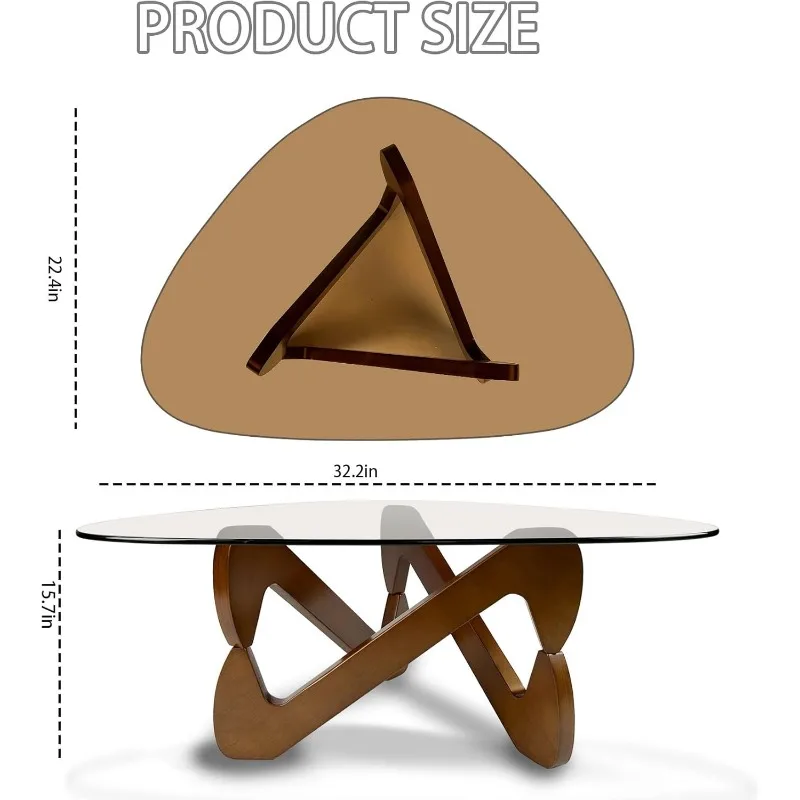
The Versatility of Round Mid-Century Tables in Modern Interiors
The continued popularity of round Mid-Century tables speaks to their remarkable versatility across different interior styles. Their clean lines and organic forms allow them to complement diverse design approaches without conflict.
In contemporary spaces, round Mid-Century tables provide historical warmth that balances modern minimalism. Their curved forms soften angular architecture, while their warm materials add textural interest to monochromatic schemes.
Strategic placement can highlight the distinctive aesthetic features of these tables. Positioning that allows light to play across natural wood grain, placing them where their sculptural bases become visible from multiple angles, or using them as counterpoints to rectangular furniture all showcase their unique qualities.
Round Mid-Century tables pair naturally with complementary furniture from the same era but also mix beautifully with other styles. They work particularly well with contemporary pieces that share their clean lines, or with traditional elements where they add modern freshness without disruption.
Proper lighting enhances the aesthetic appeal of these tables. Directional lighting that highlights wood grain, ambient light that softens curved edges, or statement lighting that complements their design language can all enhance their presence. Various styles that go well with mid-century modern furniture can be mixed for an eclectic yet cohesive look.
FAQs: Common Questions About Round Mid-Century Table Features
Are all round mid-century tables made of wood?
No, while wood was the predominant material, authentic Mid-Century tables also incorporated glass, metal, plastic, and laminate surfaces. The era was known for material innovation alongside traditional craftsmanship.
What makes a pedestal base specifically “mid-century”?
Mid-Century pedestal bases typically feature organic, sculptural forms with flowing lines and balanced proportions. They often narrow in the middle before flaring out at the bottom, creating a dynamic silhouette that appears both stable and light.
Can authentic mid-century tables incorporate glass elements?
Absolutely. Glass was frequently used for tabletops, particularly when designers wanted to showcase sculptural bases or create visual lightness. Smoked glass became especially popular in the later Mid-Century period.
How do reproduction tables differ aesthetically from originals?
Quality reproductions honor the proportions, materials, and construction methods of the originals. Lesser reproductions often simplify distinctive details, use cheaper materials that lack the same visual qualities, or alter proportions in ways that compromise the design integrity.
What surface treatments are most authentic to the period?
Oil and lacquer finishes that enhance rather than mask wood grain are most authentic. Matte or satin finishes were preferred over high gloss, and when color was applied, it typically had a depth rather than appearing as a flat, opaque coating.
For complete mid-century modern table sets that demonstrate consistent design language, authentic finishes are particularly important to maintain aesthetic cohesion.
Beyond Aesthetics: The Cultural Significance of Mid-Century Table Design
The aesthetic features of Mid-Century round tables cannot be fully appreciated without understanding their cultural context. These designs weren’t merely stylistic choices—they reflected profound shifts in how people lived and what they valued.
Post-war optimism manifested in furniture that looked toward the future while remaining accessible. The clean lines and innovative materials of Mid-Century tables expressed confidence in progress and technology while their warm woods and organic forms maintained human connection.
These tables represented the democratization of good design. Unlike the ornate, expensive furniture of previous eras, Mid-Century pieces were intended for everyday people. Their production methods made thoughtful design available to the growing middle class, reflecting the period’s egalitarian ideals.
International exchange significantly influenced Mid-Century table aesthetics. American designers drew inspiration from Scandinavian simplicity and Japanese minimalism, while American technological innovation influenced European approaches. This cross-cultural pollination created a truly international style.
How to Care for the Aesthetic Features of Your Mid-Century Table
Preserving the distinctive aesthetic qualities of Mid-Century tables requires appropriate care methods that protect their materials without diminishing their character.
For wood surfaces, use products specifically formulated for the original finish type. Oil finishes benefit from periodic reapplication of appropriate oils, while lacquered surfaces should be cleaned with non-abrasive products that won’t cloud their clarity.
Different materials require different approaches. Glass should be cleaned with ammonia-free products to prevent damage to any wood elements, while metals may need specific polishes to maintain their luster without causing corrosion.
Sunlight represents a particular threat to the aesthetic qualities of these tables. UV exposure can fade wood tones and damage certain materials, so position valuable pieces away from direct sunlight or use window treatments that filter UV rays.
When addressing issues like water rings or minor scratches, begin with the gentlest approaches before progressing to more interventive methods. Often, simple remedies can restore aesthetic appeal without risking further damage.
The patina that develops on genuine Mid-Century tables adds character that enhances rather than diminishes their appeal. Before attempting to “restore” a piece to like-new condition, consider whether its acquired character contributes to its aesthetic value and authenticity.

